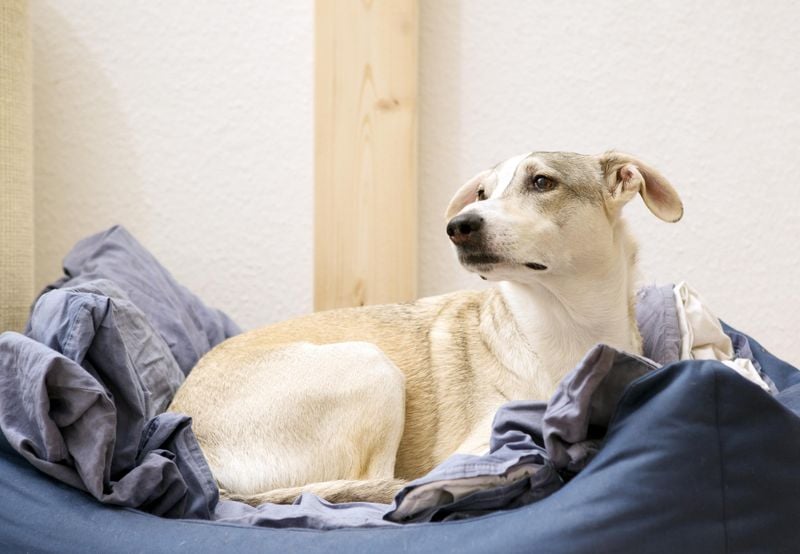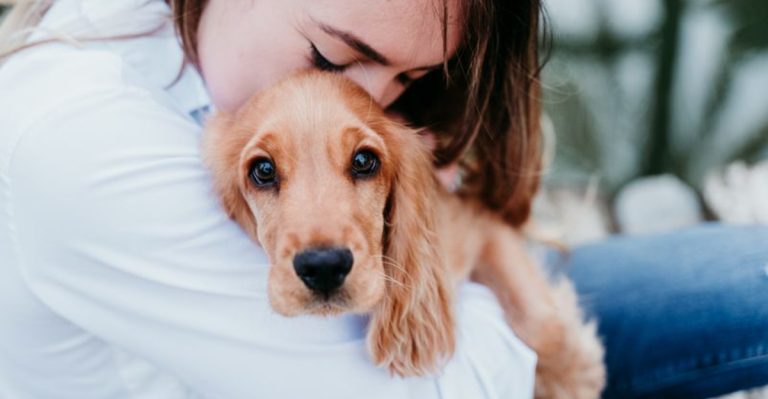11 Things Rehomed Dogs Do That Might Surprise You
Bringing a rehomed dog into your family is a beautiful journey filled with love, patience, and unexpected moments.
These furry friends come with their own histories and experiences that shape their behaviors in ways first-time adopters might not anticipate.
Understanding these common behaviors can help you create a smoother transition for your new companion and build a stronger bond from day one.
1. Confusion and Disorientation
Your newly rehomed pup might wander aimlessly through your home, bumping into furniture or staring blankly at walls. This isn’t because they’re not bright – they’re simply trying to map their new world after everything familiar disappeared.
Many rehomed dogs spend the first few days or weeks creating mental maps of their surroundings. They might sniff the same corners repeatedly or seem lost in their own backyard.
Give them time to explore at their own pace. Creating consistent routines helps tremendously, as does limiting their access to just a few rooms initially before gradually introducing the entire home.
2. Fearfulness and Anxiety
Sudden movements, raised voices, or even certain objects can trigger unexpected fear responses in your new friend. One moment they’re relaxed, the next they’re trembling under the coffee table because someone opened an umbrella.
These reactions stem from past experiences we may never fully understand. Your rehomed companion might show fear toward specific people (men with beards, children, people wearing hats) or situations that remind them of previous trauma.
Patience becomes your greatest tool here. Never force interaction with feared objects or people. Instead, create positive associations through treats, gentle praise, and allowing them to approach scary things at their own speed.
3. Clinginess or Separation Anxiety
That shadow following you everywhere – even to the bathroom? It’s your rehomed dog showing attachment in the most literal way possible. After experiencing abandonment, many rescues develop intense bonds with their new humans.
Panic barking, destructive behavior, or accidents when left alone aren’t signs of poor training but manifestations of genuine fear. Your dog worries you might disappear forever, just like their previous family did.
Building confidence takes time. Start with brief separations (just seconds at first) and gradually increase duration. Special toys reserved for alone time and maintaining calm departures and arrivals help teach them that you’ll always return.
4. Hyperactivity or Overexcitement
Wild zoomies at random hours, excessive jumping, or non-stop wiggling might make you question if your rehomed dog has an off switch. This boundless energy often comes from previous confinement or lack of proper exercise in their former situation.
Dogs from shelters or restricted environments may have months of pent-up energy to release. Some may never have learned appropriate play behaviors or how to self-regulate their excitement levels.
Structured exercise routines work wonders here. Puzzle toys, training sessions, and regular physical activity help channel that energy positively. Remember that mental stimulation tires dogs out just as effectively as physical exercise!
5. Depression or Lethargy
A dog staring blankly out the window or refusing favorite treats isn’t being stubborn – they’re grieving. Rehomed dogs often experience a mourning period for their previous family, regardless of how that relationship ended.
Low energy, loss of appetite, or disinterest in activities that should excite them are common signs of canine depression. The good news? This phase typically passes as they bond with you and adjust to their new life.
Gentle encouragement works better than forced interaction. Maintain predictable routines, offer high-value treats, and celebrate small victories like a brief tail wag or moment of engagement. Consider short, positive training sessions to build confidence and connection.
6. Loss of House Training
Finding unexpected puddles from a supposedly house-trained adult dog can be frustrating. Your rehomed companion isn’t being difficult – they’re confused about the rules in this new environment.
Even perfectly trained dogs may regress when their whole world changes. Different schedules, unfamiliar access points, or anxiety can all contribute to accidents. Some shelter dogs may have been inconsistently trained or forced to eliminate in their living spaces.
Approach this with the same patience you’d give a puppy. Establish regular potty breaks, celebrate successful outdoor eliminations with praise and treats, and never punish accidents – just clean thoroughly and watch more carefully next time.
7. Guarded or Cautious Affection
Your hand reaches out for a gentle pet, and your new dog flinches or backs away. This reluctance to accept affection doesn’t mean they don’t like you – they’re simply processing how to trust human touch again.
Many rehomed dogs have complicated relationships with human contact. Some may never have experienced gentle handling, while others associate touch with unpredictable outcomes based on past experiences.
Let them set the pace for physical interaction. Avoid looming over them, making direct eye contact, or forcing pets. Instead, sit quietly nearby, occasionally offering treats without expectations. Watch for subtle invitations like a slight lean toward you or a relaxed posture – these are huge milestones worth celebrating.
8. Testing Boundaries
Suddenly your shoes become chew toys, or your previously well-behaved rescue starts counter-surfing. This boundary-testing behavior actually demonstrates growing comfort in their new environment.
As rehomed dogs begin feeling secure, they often experiment to learn the rules of their new household. What was forbidden in their previous home might be different here, and they’re smart enough to check! This exploration phase is actually a positive sign they’re settling in.
Consistent, gentle correction works best during this adjustment period. Redirect inappropriate behaviors to acceptable alternatives (a shoe for a chew toy, for example) and maintain clear expectations. Remember that this testing phase is temporary as they learn to navigate their new world.
9. Heightened Sensitivity to Triggers
The vacuum cleaner starts, and your calm companion transforms into a barking, trembling mess. Specific sounds, movements, or objects can trigger intense reactions in rehomed dogs based on past associations you may never fully understand.
Common triggers include brooms, raised voices, certain types of footwear, or even specific rooms in the house. These reactions aren’t behavioral problems but emotional responses to perceived threats based on previous experiences.
Managing the environment helps tremendously. Identify triggers and either minimize exposure or create new, positive associations through counter-conditioning. For example, the appearance of a broom might predict treats raining from the sky instead of something scary.
10. Emergence of Personality
The shy, quiet dog you brought home three months ago now prances around with a squeaky toy, barking playfully at the cat. This personality transformation surprises many adopters who thought they knew their new pet.
Shelter environments and transition stress often mask a dog’s true nature. The first few weeks or even months may reveal only a fraction of their actual personality as they operate in survival mode. As security grows, so does their confidence to express their authentic selves.
This gradual unfolding is one of adoption’s greatest joys. Document this journey with photos and notes – you’ll be amazed comparing the reserved dog you brought home with the character who emerges once they know they’re truly home.
11. Gratitude and Loyalty
There’s something extraordinary about the way a rehomed dog looks at you – a depth of connection that seems to say “thank you” without words. Many adopters describe this bond as unlike any they’ve experienced with other pets.
Rescued dogs often display remarkable loyalty and appreciation through subtle behaviors: the gentle paw on your knee during quiet moments, how they check on you throughout the day, or their complete contentment just being in your presence.
Research actually supports this observation. Dogs who have experienced hardship often form especially strong attachments to those who provide safety and care. This profound connection becomes one of the most rewarding aspects of adopting a dog who needed a second chance.

















